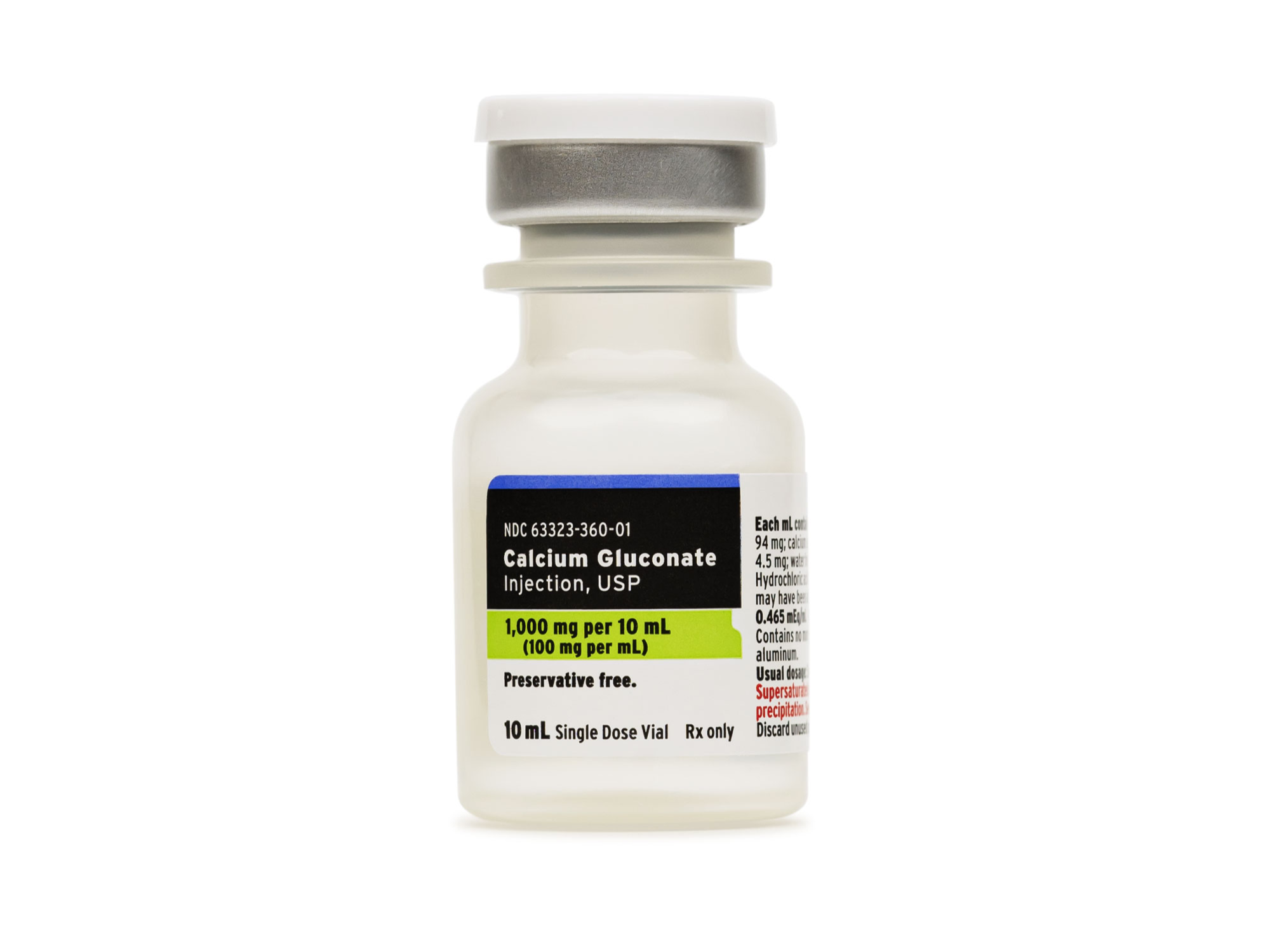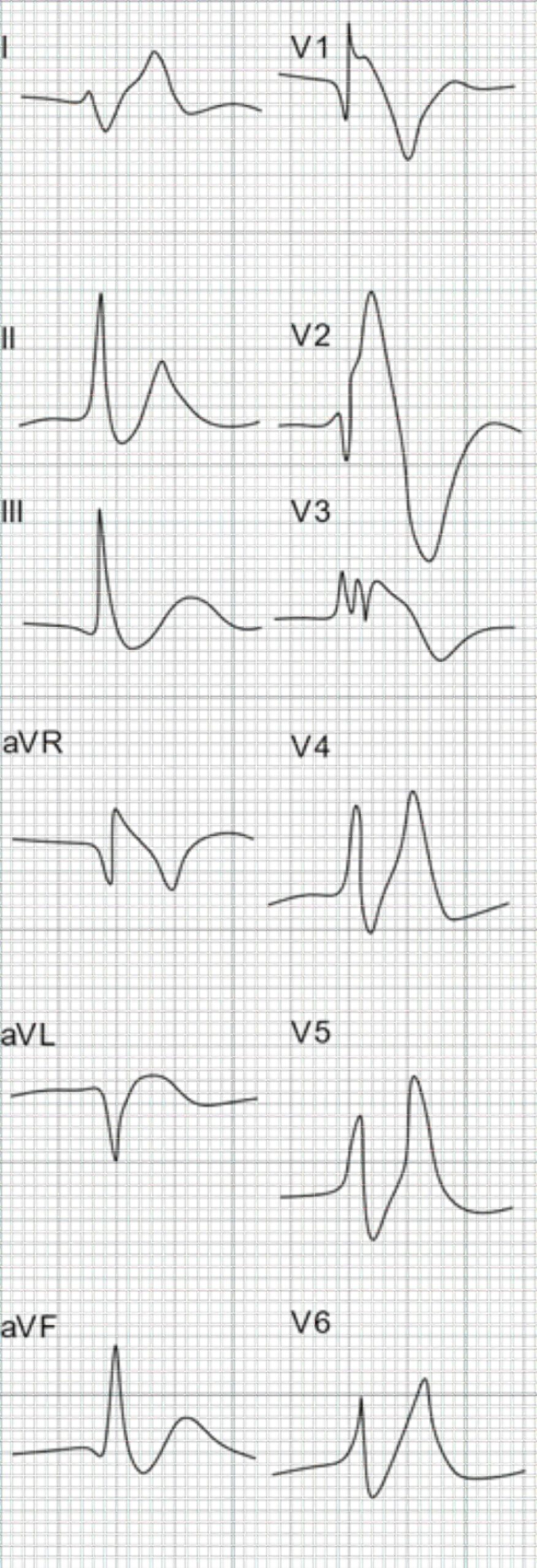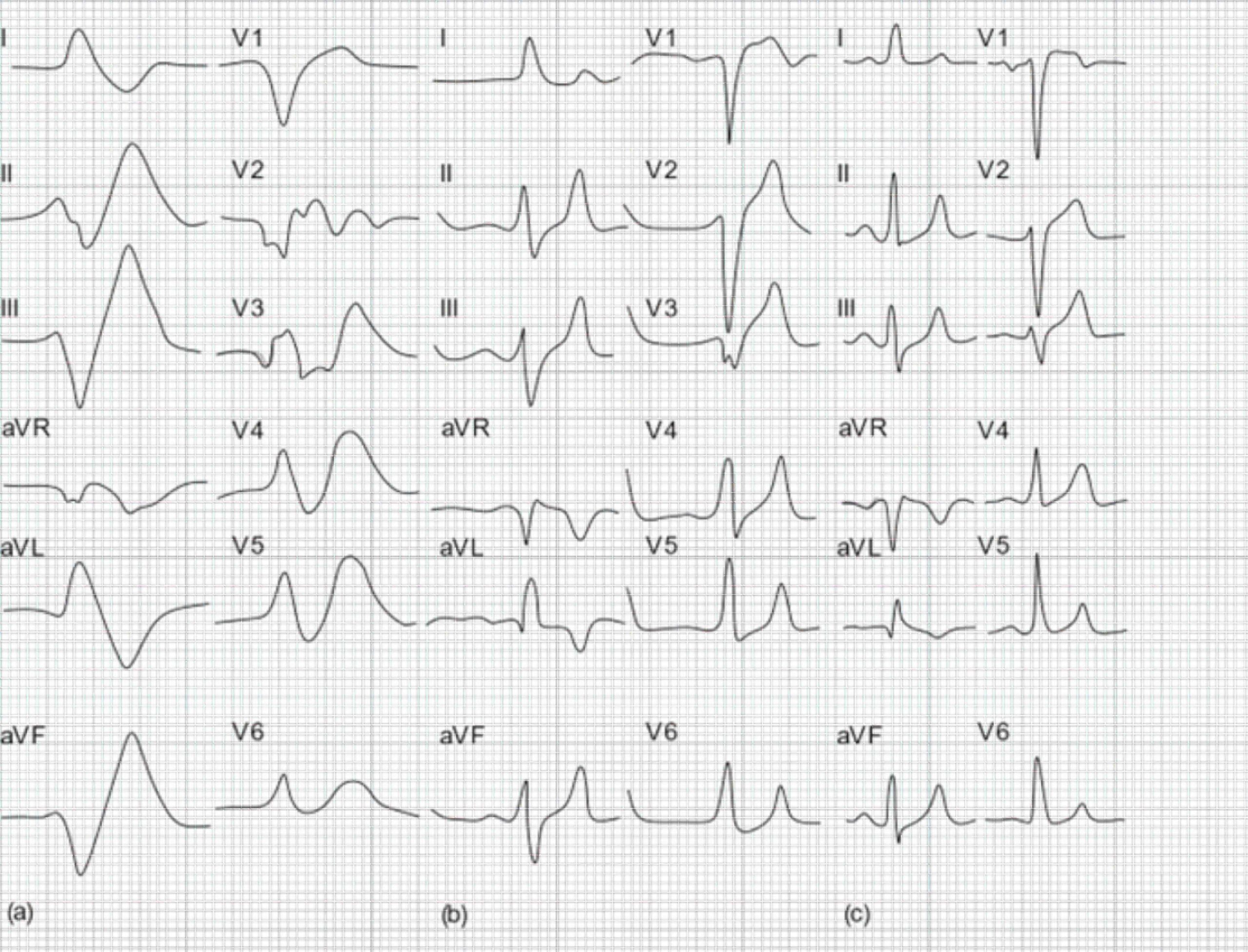Hyperkalemia
Tented T waves are the characteristic ECG finding of hyperkalemia. They are generally seen with mild to moderate increases of serum potassium.
Once detected on ECG, the clinician must be alerted and begin corrective interventions. Severe hyperkalemia is treated with calcium gluconate. It normalizes cellular membrane potential and causes the ECG to return to normal. However, calcium gluconate is not the definitive treatment for hyperkalemia. The underlying cause must be identified and treated as well.
Hyperkalemia is characterized by broad QRS complexes that last from 0.2 to 0.26 seconds. Patients present with an atypical bundle-branch block pattern. The QRS complex is followed by a tall T wave. Since potassium intoxication inhibits the atria from producing an observable depolarization on ECG, the P wave is usually not visible.
Untreated, severe hyperkalemia can produce life-threatening arrhythmias such as ventricular tachycardia and ventricular fibrillation. It can also push the heart into asystole. In patients with kidney failure, severe hyperkalemia can cause ST elevation resembling acute MI. This finding is termed dialyzable injury.
Patients with moderate hyperkalemia may have symmetrical, peaked (or tented) T waves in the middle to lateral precordial leads.

Calcium gluconate is a first-line treatment for severe hyperkalemia, but it does not treat the underlying cause.
Case 1

48-Year-Old Man With Renal Failure and Hyperkalemia ECG
The ECG in figure 1 is from a 48-year-old man with renal failure and severe hyperkalemia (K+ = 8.6 mmol/L). His ECG reveals:
- Absent P waves
- Rate of 54 bpm
- Atypical RBBB with a QRS duration of 0.16 seconds
- ST elevation in leads V1, V2, V3, I, aVR, and aVL
This patient exhibits a dialyzable injury. His ECG changes are due to severe hypokalemia rather than anatomical alterations caused by something like acute pericarditis or MI. When the electrolyte imbalance is corrected by means of hemodialysis, these ST segment elevations shall revert to the isoelectric line, such as in case 2 below (see figure 2).
Case 2
A 72-year-old man with chronic renal failure.

72-Year-Old Man With Chronic Renal Failure ECG
Figure 2 shows a series of ECGs obtained from a 72-year-old man with chronic renal failure. The first ECG (a) was taken pre-hemodialysis. The second (b) was taken after 45 minutes of hemodialysis. The patient’s serum potassium at this point was 6.3 mmol/L, with a total serum calcium of 0.99 mmol/L. Before completing hemodialysis, the patient’s ECG normalized, but broad QRS complexes and peaked T waves persist.